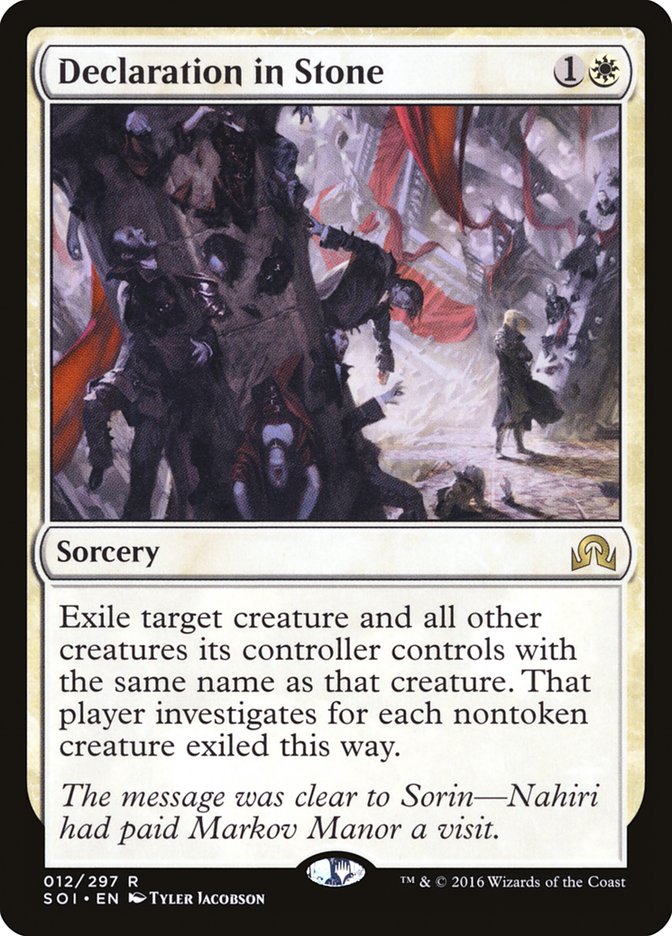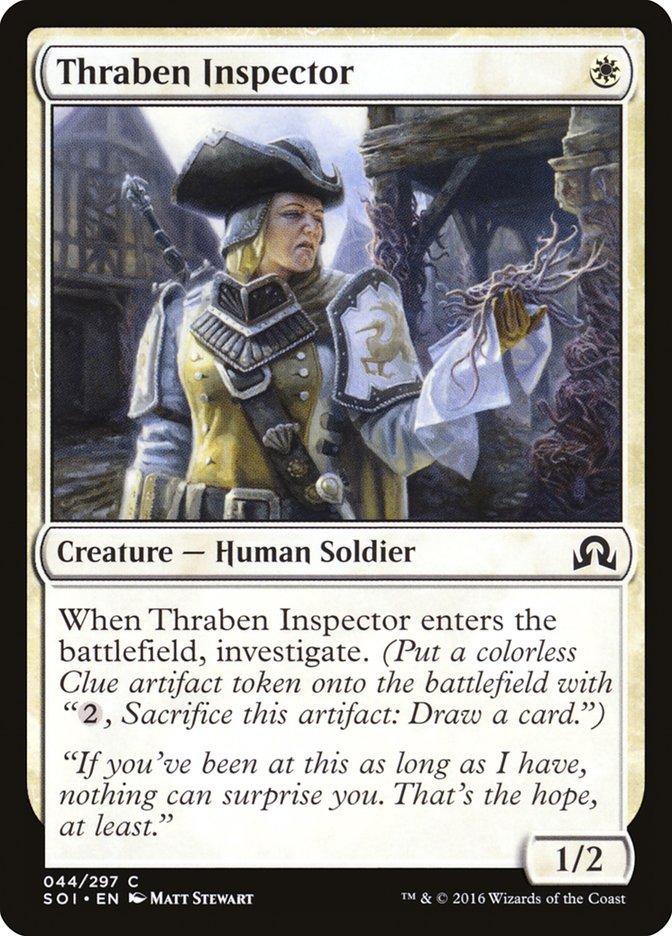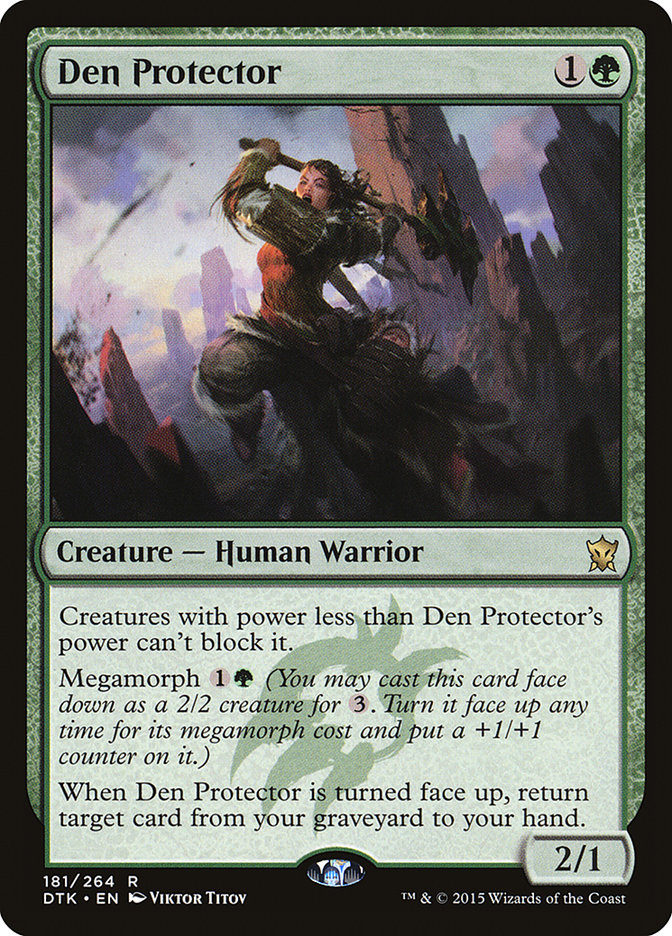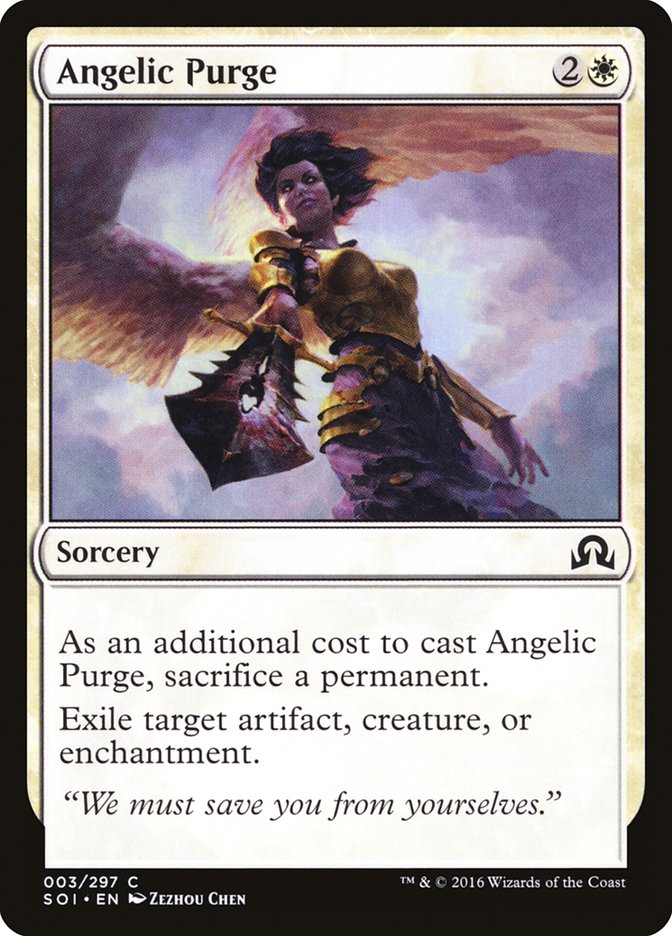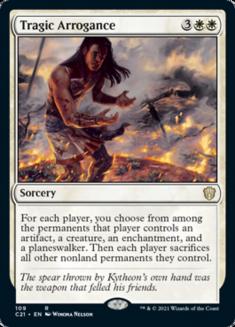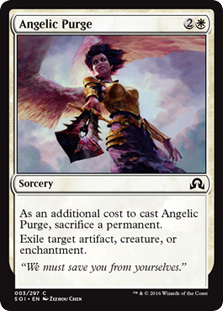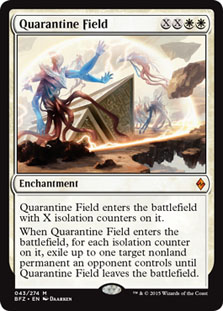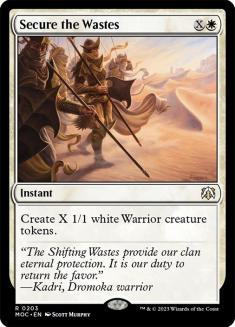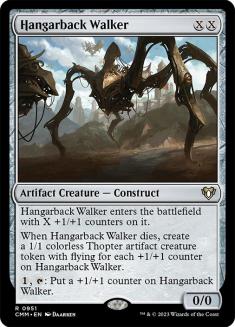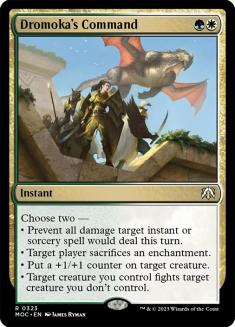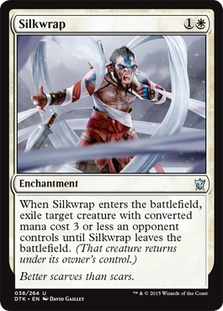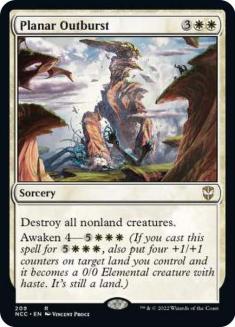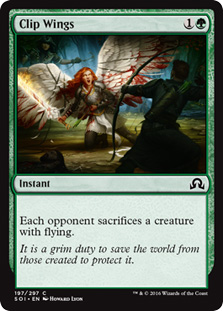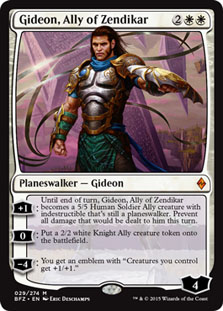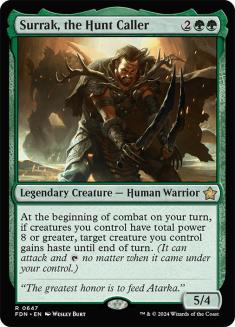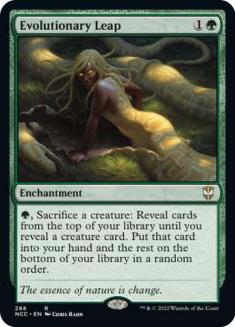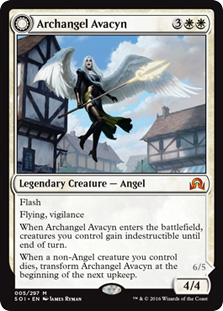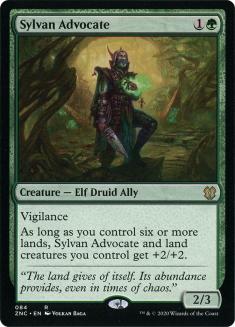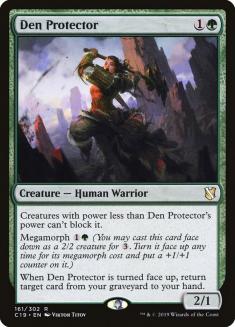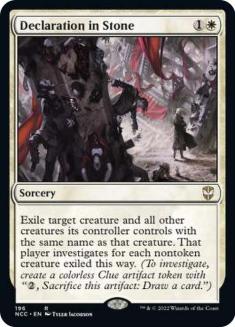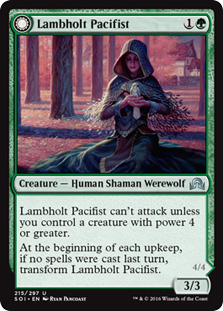It’s not often that I think I’ve built close to the best deck I could have before, during, or after a Pro Tour.
It’s easy to get a sense of how well your deck is positioned during a tournament and what the breakout decks are. Even early on, before the cream rises to the top, you’ll often be able see a key interaction between cards that make a deck idea you had discarded function, or something you’d never even considered in a competitor’s list. Even without knowing all the exact cards and exact lists other people are running, you can get a good idea how powerful their decks are just by having a good sense of the format in general.
Even my Pro Tour-winning Jeskai deck, which was a deck I loved and took great effort and care building, wasn’t the best deck for the tournament. I think that title would likely have to objectively be given to the Birthing Pod deck.
For Shadows over Innistrad it felt like G/W Tokens was the place to be the whole way through. Even though it won the Pro Tour, I still think it’s an underrated archetype and there are still plenty of different directions you can go with deck building being discovered.
G/W Tokens was the best deck in Standard. I think it still is, so you’d best have a plan for beating it, or being running it.
Let’s start by looking at the list I played at the Pro Tour.
Creatures (14)
Planeswalkers (8)
Lands (25)
Spells (13)

Often, how well you do at a tournament isn’t representative of how good you thought your deck was. My Pro Tour didn’t go well thanks to a 1-5 Draft record, but I loved my deck for Constructed and it felt like I put myself in a good position to succeed. The cards just didn’t line up.
This version of G/W Tokens is more controlling thanks to Tireless Tracker and the hard removal of Declaration in Stone. The sideboard also focuses on being able to transform into having plenty of removal and often looks to gain advantage in longer games.
The strength of G/W Tokens lies in its ability to play many different roles powerfully and proactively all throughout the game. Nissa, Voice of Zendikar and Gideon, Ally of Zendikar will often play completely different roles depending on the matchup, defense or offense, and are capable of doing both well.
You want card draw and card selection? Oath of Nissa, Evolutionary Leap, Tireless Tracker, and Den Protector are some of the best options available.
Planeswalkers? Gideon, Ally of Zendikar and Nissa, Voice of Zendikar will generate value every turn they aren’t dealt with.
Removal? Again, some of the best in the format thanks to Declaration in Stone, Dromoka’s Command, Planar Outburst, and Tragic Arrogance.
Want to get off to a solid start in the early game? Sylvan Advocate and Nissa, Voice of Zendikar are great at pressuring and gumming up the ground and scale nicely in the late-game.
Late-game haymakers? Archangel Avacyn, Secure the Wastes, and Westvale Abbey have all got you covered.
Tireless Tracker is the main card that differs in my lists from others. I think it’s a powerful card chocked full of value that fits the curve and compliments the rest of the deck. It essentially functions similarly to a third set of planeswalkers that must be dealt with immediately or it will continue to generate advantage each turn. Most games I lose with the deck are because I run out of resources, and Tireless Tracker can’t be beaten when it comes to generating value over time.
Creatures (20)
Planeswalkers (8)
Lands (26)
Spells (6)

The evolution of Steve Rubin’s Pro Tour list was kind to Jon Stern at Grand Prix Toronto and I like the direction it takes.
Lambholt Pacifist is a great card and I strongly support the addition to the deck. Curve is ridiculously important in this format, and having two-drop into three-drop will often mean the opponent will be too far on the back foot to recover. Part of the reason why Sylvan Advocate is one of the best cards in the deck is simply because a 2/3 for two mana plays excellent defense in this format.
Even at its worst, Lambholt Pacifist acting as a 3/3 brick wall that protects your planeswalkers is good enough in a lot of matchups. The deck is supersaturated in ways to cheat around its restriction from being able to attack. It’s phenomenal with Dromoka’s Command for multiple reasons. It’s a good body for fighting, adding a +1/+1 counter to it allows it to attack, and Dromoka’s Command is an instant, which gives you opportunities to pass and let it flip while leaving up the Command. Don’t forget how downright filthy it is when it just flips when you jam your Lammy out on the play on turn 2.
The reason I like Lambholt Pacifist and Sylvan Advocate is why I’m not a huge fan of Thraben Inspector and Hangarback Walker. They just aren’t good at getting into scuffles and surviving in the early-game, which I think is most important aspect of the smaller creatures in the deck.
Creatures (16)
Planeswalkers (8)
Lands (25)
Spells (11)

Replacing Thraben Inspector with a card made of pure value (Den Protector) is a decision I can get behind.
Den Protector does have a lot going for it in this deck and Doug Potter (Edmonton, represent!) does share the same initials, so it makes sense. It can be a solid two-drop, three-drop, or five-drop. It’s not hard to pump its power beyond anything the opponent has.
One issue with Den Protector is that there isn’t much to get back in the early-game. Multiple copies of Oath of Nissa can help, but often there just won’t be much to get until later in the game. The deck is also incredibly mana-hungry. Den Protector is a costly card when you’re going for full value, and underwhelming when it isn’t being unmorphed.
Angelic Purge is interesting tech for eating problem permanents, ranging from Pyromancer’s Goggles to Demonic Pact. Finding fodder in the form of Oath of Nissa or a Plant token isn’t hard either.
Here’s the version I’ll be trying out going forward.
Creatures (15)
- 1 Hangarback Walker
- 4 Sylvan Advocate
- 4 Archangel Avacyn
- 1 Deathcap Cultivator
- 4 Tireless Tracker
- 1 Lambholt Pacifist
Planeswalkers (8)
Lands (25)
Spells (12)

I love it when there are multiple versions of the same deck. Right now G/W Tokens is evolving, and it will continue to do so. That means there are many powerful options, which makes for a good format.
Sideboarding Guide
The Mirror
In:
Out:
My strategy is to focus on the early-game and try to get off to an early lead rather than looking to Den Protector or Evolutionary Leap for a late-game advantage. This can be a grindy matchup, but I find that it favors whoever can get the most value out of their planeswalkers while killing off their opponents in the early game.
Still, Tragic Arrogance is the best card in the mirror, so make sure you play around it if possible and bring in as many as you have access to. One nice trick is keeping exactly five creatures on the battlefield and flipping Westvale Abbey in response to Tragic Arrogance, which means the creature you’ll be keeping is a very angry Ormendahl, Profane Prince.
Keep in mind Tragic Arrogance, Archangel Avacyn, Quarantine Field, Secure the Wastes, and Westvale Abbey are the major comeback cards that are capable of turning a game around on an unprepared opponent.
Mono-White Humans
In:
Out:
Your basic “survive until you can cast your five-drops” matchup.
Nissa, Voice of Zendikar is better than Gideon, Ally of Zendikar, since the 2/2 tokens made for blocking are often not big enough to kill anything anyway.
Clip Wings is usually surprisingly good here, since it’s an incredibly effective answer to Gryff’s Boon, Archangel of Tithes, or Dragonlord Ojutai (against blue versions of the deck.) It might seem narrow, but Gryff’s Boon is a problem card otherwise unless you have Archangel Avacyn.
Bant Company
In:
Out:
This matchup can be over very quickly or drag on for many, many turns. You have a better late-game and more incremental value at a lower mana cost once your planeswalkers start going to work, but Bant Company is capable of lightning-quick starts and devastating Collected Company hits.
Planar Outburst is more important on the draw and Tragic Arrogance is better on the play. Remember to watch out for Negate and Archangel Avacyn for Planar Outburst.
Generally you want to stay on defense until you have firmly established control, since they can drop a bunch of creatures out of nowhere and push through to kill your planeswalkers if you’re not careful and start turning your creatures sideways. If you do have a fast start and they stumble, it’s not uncommon to just pump your team and attack all-out each turn, since most of Bant Company’s creatures won’t be able to keep up with an Anthem effect or two.
U/R Control
In:
Out:
Keep in all your removal for Thing in the Ice and try not to let it flip. Same principle applies to Chandra, Flamecaller; Pyromancer’s Goggles; and Jace, Vryn’s Prodigy. If these cards aren’t getting value, they probably aren’t winning.
W/B Control
In:
Out:
Any deck that has access to Virulent Plague should make you consider siding out Secure the Wastes. Virulent Plague isn’t actually all that good against my version of the deck, since it’s not hard to ignore until you find an answer.
Keep the pressure on, slowly grind out some damage and value, and make sure they can’t ever stick a planeswalker or Kalitas, Traitor of Ghet. If they are more creature-focused, with Eldrazi Displacer and Thought-Knot Seer, keep in more removal.
G/R Goggles
In:
Out:
Lambholt Pacifist and Tireless Tracker work great with Surrak, the Hunt Caller by instantly activating him and making Reality Smasher question eating that extra slice of Human pie so it can keep up. Some of the best starts involve a hasty Surrak, the Hunt Caller followed up by Gideon, Ally of Zendikar, which is also immediately given haste by Surrak.
Make sure you have removal for their top end and hope you don’t have a slow draw.
Esper Dragons
In:
Out:
Dragonlord Ojutai is a bit of a problem for my version of the deck, since there are very few ways to remove it or block it. Try to get out to a fast start and put them on the back foot.
There you have it! That’s my take on G/W Tokens, which I think is currently the best deck in Standard.
It’s consistent, powerful, and has a great sideboard.
How does one go about beating G/W Tokens? I think it’s difficult to find a good matchup against the deck, but Mono-White Humans will often out-race it, Dragonlord Ojutai will often out-value it, Crush of Tentacles will sometimes out-tentacle it, and Kalitas, Traitor of Ghet will occasionally out-Zombie it.
For now? I’m just going to keep making Plant tokens.


